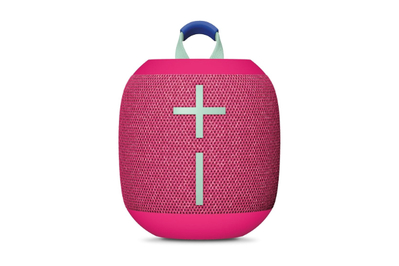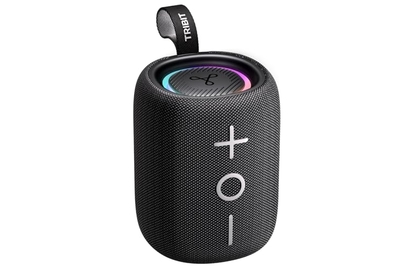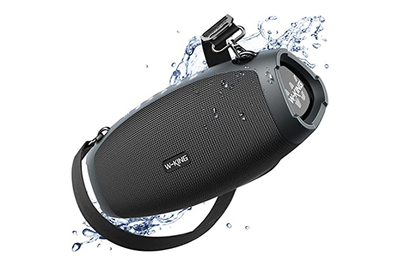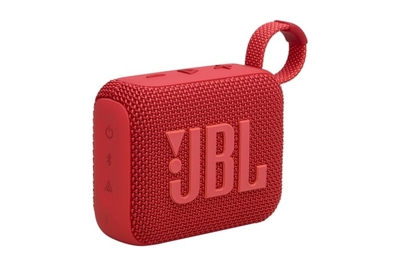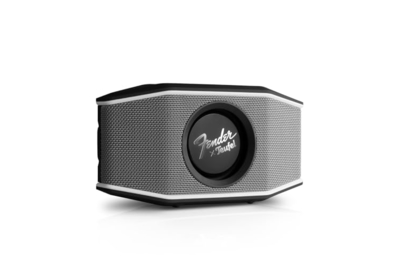Top Bluetooth Speakers of 2025: Travel and Home Wireless Speakers
How we chose and tested
Portability and battery life: We choose versions with rechargeable batteries that can be easily transported to the beach or the park. When choosing our top selection, we looked for top pick makers that are small and portable, such as those that can fit in a backpack or beach bag.
Ruggedness and waterproof design: We prioritize speakers that can withstand the rigors of travel. We prefer speakers with Ingress Protection (IP) ratings, which indicate how dustproof and waterproof a speaker is.
Price: We established a minimum price of $10. Less costly devices seldom sound better or play louder than a phone's built-in speakers.
Playing controls: Because you can control playing from your Bluetooth source device (often a phone or tablet), we don't need playback controls on the speaker itself, but it's a nice feature.
Bluetooth codecs: We do not grant bonus points for including Bluetooth codecs other than the basic SBC codec included in all Bluetooth devices. The audio variations between these codecs are minimal in comparison to the plainly discernible differences between the speakers themselves.
Bluetooth speakers may have additional capabilities such as telephone functionality, multi-speaker pairing (the ability to play the same content over two Bluetooth speakers at the same time), and built-in illumination. We don't think any of these features are necessary, although they can be useful extras.
Portable Bluetooth speaker's maximum output

From these tests, I filter down the contenders to the models that have a real possibility of impressing our listening panel, as well as all of our previous selections. To prepare for our brand-concealed panel testing, I cover the speakers with black fabric and split them into four categories: ultra-compact, tiny, medium, and big. To ensure fairness in the test, I used a shaped-noise channel-balancing test tone recorded from a Dolby Digital receiver to adjust the loudness within each group to the same approximate level.
During our brand-concealed testing, our listeners pay close attention to
How clear do the speakers sound at regular levels?
How the speakers balance bass, midrange, and treble
How loud the speakers can play when turned up.
How clear things sound when turned up
Finally, I test the battery life of each of our top selections by repeatedly playing Steely Dan's "Aja" at an average volume of 75 decibels (measured at one meter) until the power runs out. For the bigger Ultimate Ears Hyperboom speaker, I raised the volume to 81 decibels.
I also test the maximum Bluetooth range of all of our recommendations by placing my Samsung Galaxy S10 phone indoors, in a window, and dragging the speaker away to my garden until the connection fails. There are no industry-standard procedures for evaluating these features, but our approaches have proven effective after 11 years of testing over 400 portable Bluetooth speakers.
With each device that includes speakerphone capabilities, I contact Wirecutter senior staff writer Lauren Dragan. I take note of how the speaker sounds to me, and she informs me how my voice sounds from her end.
Top pick: Ultimate Ears Wonderboom 4.

Top pick
This compact, spherical speaker offers a natural sound, a nice appearance, and is intended to withstand outdoor activities. But it's a touch hefty.
The Ultimate Ears Wonderboom 4 is the closest thing we've found to a perfect all-around portable Bluetooth speaker, due to its excellent performance, durability, and portability.
It sounds fantastic for its size. The Wonderboom speakers have consistently won our brand-concealed testing, with listeners applauding a more "open, 3D sound" than competitors provide. The Wonderboom 4 provides a natural blend of bass, middle, and treble, so no instruments or vocals are artificially amplified.
We tested the maximum loudness at 1 meter to be 84.0 decibels, which is enough to fill a bedroom or kitchen with sound. The Outdoor Boost button increases the volume by around 3 dB, making the speaker somewhat louder but sacrificing bass.
The Wonderboom 4 features huge plus/minus volume controls on the side, as well as top-panel buttons for power, start/stop, and Bluetooth connectivity. Michael Hession/NYTimes Wirecutter
The design is sturdy, functional, and enjoyable. This IP67-rated speaker is dustproof, can be immersed in up to 1 meter of water for 30 minutes, and floats. When we dropped it from 5 feet onto a backyard deck and then into concrete, it kept playing with only a few minor scratch marks.
We measured its Bluetooth range at a remarkable 100 feet and obtained 11 hours of battery life—not quite the 14 hours promised by Ultimate Ears, but still sufficient. An elastic loop on top allows you to hang the speaker from a variety of items. You may connect two Wonderboom 4 speakers to generate stereo sound or to broadcast sound in a second neighboring room.
This roundish speaker is 4.1 by 3.6 inches and weighs 15 ounces. It's available in four color schemes: black, pink, light gray, and blue.
How has the Ultimate Ears Wonderboom held up?

"I purchased my Wonderboom two and a half years ago, and it has held up quite well. I routinely stream Pandora on it for hours at a time, and I'm always surprised at how rarely it has to be charged. While the color has faded slightly, it still looks (and sounds) as fantastic as it did when it first came. Everything about it—pairing, portability, durability—is excellent." —Ben Frumin, editor-in-chief.
Several Wirecutter workers have purchased the Wonderboom and have had positive experiences with it. Our editor-in-chief chose it from among hundreds of top selections on Wirecutter to feature in our "52 Things We Love" series.
Flaws, but not deal breakers.
It's light on bass. In terms of sound quality, the Wonderboom's one recurring drawback is a lack of bass for hip-hop or hard rock. If you like more bass, consider the bigger but equally priced Fender x Teufel Rockster Go 2 (detailed below).
It's bulky and missing a few features. This speaker's 3.6-inch diameter makes it too large to fit comfortably in a briefcase or laptop bag, but it will fit nicely in a backpack.
The Wonderboom 4 lacks a speakerphone capability and an analog input, although we seldom utilize these functions.
BuBudget pick.: Tribit Stormbox Mini

Budget pick
This little speaker produces the richest, most authentic sound we've heard in its price category, although it cannot play as loudly as our top selection.
The Tribit StormBox Mini is one of the finest audio deals we've ever seen. Few speakers under $50 sound as rich and fulfilling as this one, and it comes with a number of handy features, like an IPX7 water-resistance rating and internal lighting. It's not the most portable device we've seen at this price point, but it fits easily into a beach bag or luggage.
It sounds richer and is often less expensive than our prior budget option. For five years, the Tribit XSound Go was our budget selection, comfortably outperforming other low-cost versions in our brand-concealed testing. However, in our most recent test, the StormBox Mini outperformed the XSound Go by a similar margin.
Our listeners found the XSound Go made voices sound clearer, but they preferred the StormBox Mini for its deeper, richer sound. "Compared with the StormBox Mini, the XSound Go sounds too trebly," one panelist commented.
The feature set is remarkable considering the price. The StormBox Mini is IPX7-rated, which means it can withstand being immersed in 1 meter of water for 30 minutes but is not dust proof. The 3.5 mm analog input allows you to connect to non-Bluetooth devices, such as portable music players or laptops.
The multicolor lights on the top of the speaker pulse in rhythm with the music, and they can simply turned off if desired. A rope on top allows you to hang the speaker from a hook, and springy feet on the bottom keep sound vibrations from scooting the StormBox Mini across a table—but only if you remove the protective plastic films that cover the feet.
You can use two StormBox Minis to get stereo sound, but they will not link with any other Bluetooth speaker. The Mini comes in three colors: black, light blue, and light green.
It is reasonably portable. While the StormBox Mini is significantly larger than the JBL Go 4, it is just 4.7 inches tall and 3.6 inches broad and deep, weighing 1.6 pounds. So it's ideal for chucking into a beach bag, but too large for a laptop bag or handbag.
In our tests, the Bluetooth range was around 90 feet.
Flaws, but not deal breakers.
It doesn't play very loudly. In our tests, it had a maximum volume of 80.7 decibels, which was not considerably louder than the much smaller JBL Go 4. But it sounds richer.
Battery life is a little short. In our tests, the StormBox Mini had an average battery life of roughly 9.5 hours with the internal lights turned off, which fell well short of Tribit's promise of 12. Still, that's enough for a full day at work or the beach.
It behaves strangely when you receive a phone call. The StormBox Mini lacks a loudspeaker option, and unlike the UE Wonderboom 4, it does not ignore phone calls when connected to your phone. Instead, the speaker uses the voices of both individuals on the connection, resulting in irritating echoes.
Upgrade recUpgrade pick W-King X10.

Upgrade pick
This speaker can play quite loudly while still producing clear, rich sound, and it has a long battery life. However, it is somewhat bigger and less sturdy than our top selection.
The W-King X10 is the ideal portable speaker for bigger gatherings, such a picnic, a small beach party, or a yoga class. This football-sized speaker frequently costs less than our top selection, yet it sounds as good and plays louder than many of the more costly speakers we've tested.
It is bigger and louder than our top selection. The X10 is approximately 8 decibels louder than the Wonderboom 4, which is equivalent to the difference between typical conversation and raising your voice to address someone 30 feet away.
Even at that high intensity, throughout our tests, it sounded smooth and balanced, with clear vocals and lots of bass. The outside mode reduced the bass but did not increase the loudness. (Unfortunately, the speaker has no indication to show which mode it is in.)
The X10 weights 6.5 pounds, which is doable when using the supplied shoulder strap (which includes a bottle opener), but it is not a speaker that can be readily tossed into a handbag or luggage. Once you get at your location, you may either set the speaker down horizontally or stand it on end.

The battery life is great. In our testing, we obtained 24 hours, which is excellent—but falls short of W-King's stated 42 hours.
The back panel features a USB-C charging connector, a 3.5 mm analog audio input, a TF card slot for MP3 playback, and a USB-A output for mobile device charging. You may use two X10 devices to create stereo audio.
We assessed the speaker's Bluetooth range at 70 feet, which is more than acceptable.
Flaws, but not deal breakers.
It isn't as durable as our top selection. The X10 has an IPX6 classification, which means it may be sprayed with a hose but not submerged in water, and it is not dustproof.
Also, the buttons are a touch stiff. They may be difficult to operate with tiny or arthritic hands; the comparable but somewhat less powerful W-King D8 features larger, more user-friendly buttons.
The speakerphone function isn't fantastic. Its speakerphone feature worked well in our tests, although it sounded boring and loud to both Lauren and me, as if we were in separate cars.
Best for folks who seek a compact, ultra-portable speaker: the JBL Go 4.

Ideal for...
This speaker is tiny enough to fit in a pocket but produces high-quality sound. However, it lacks bass and has a short battery life.
If you enjoy traveling light yet want to listen to music and podcasts wherever you go, the JBL Go 4 is an excellent option. It's one of the few ultra-compact Bluetooth speakers that really sounds decent, and it's so small and light that it could fit practically anywhere, including a laptop bag, handbag, or coat pocket.
It's tiny and durable enough for hiking. The Go 4 measures about 3.7 by 3 by 1.7 inches and weighs only 11 ounces, making it suitable for even the most minimalist traveler's pack.
The IP67 classification indicates that it is dustproof and can tolerate immersion in 1 meter of water for 30 minutes. A little loop at the top allows you to hang the speaker with a strap or carabiner clip.
It seems promising considering its size, but keep your expectations in check. The Go 4's small size limits it from creating much bass, but what bass it does produce is well-balanced with the treble and midrange, resulting in a pleasing sound.
This speaker is loud enough for a bedroom, bathroom, or tent, peaking at 79.8 decibels in our tests—about 4 decibels less than the Wonderboom 4, but 3 decibels louder than the majority of similarly sized devices we tested.
The Go 4 is one of the first portable Bluetooth speakers on the market that use Auracast technology. Auracast allows you to send a signal to many Auracast-equipped speakers and headphones using a single source.
Unfortunately, we were unable to get the Go 4 to function with a FlooGoo Auracast transmitter; however, Auracast products are still in early stages of development, so we anticipate some issues. Even without Auracast, you can use two Go 4 speakers to achieve stereo audio.
We only obtained approximately 5 hours of battery life from the Go 4 on regular mode, which isn't terrific. However, using the Playtime Boost feature in the JBL Portable mobile app increased this to almost 8 hours 45 minutes, which is far better for such a little speaker. The Playtime Boost setting has somewhat less bass but still sounds nice; if you're listening to podcasts or background music, you're unlikely to notice.
Bluetooth range was around 85 feet, and the Go 4 is available in nine color options.
Flaws, but not deal breakers.
It has far less bass than bigger portable speakers. There's only so much bass you can get from such a tiny cabinet. Although the Go 4 did not distort when we played Audrey Nuna's "damn Right," the rhythmic drive and kick of your hip-hop, R&B, and EDM favorites will be missed.
Fender x Teufel Rockster Go 2 is the best option for those who desire more bass than our top selection provides.

Ideal for...
This speaker has the aural clarity and complete sound of a tiny bookshelf speaker, but it is less portable than our other recommendations.
The Fender x Teufel Rockster Go 2 is the only portable Bluetooth speaker we've tested for under $100 that sounds like a respectable bookshelf speaker. While not the most portable speaker available, it is quite small and durable.
Even audiophiles might appreciate the sound. In comparison to most other portable Bluetooth speakers, the Rockster Go 2 produces an almost surprisingly realistic and smooth sound. It does not add sibilance or coarseness to voices, nor does it highlight one instrument over another. A huge passive radiator in the front intensifies the bass, giving the Rockster Go 2 a more pleasing sound than other speakers of its size.
In our tests, the Rockster Go 2 produced a maximum output of 86.2 dB, representing a 2.2 dB improvement over the Wonderboom 4. However, it sounds more louder since it has more bass.
This speaker does not sound as expansive as a set of stereo speakers or a nice soundbar, but neither do other speakers of this size. The "Dynamore" option at the top attempts to give more spaciousness, but it appears to simply apply a bogus surround sound with extra reverb, so we didn't bother with it.
The Rockster Go 2 supports the AAC Bluetooth codec, which may provide a little sound benefit for iPhone and iPad users.

It is suitable for travel. Because it is only 2.4 inches thick, the Rockster 2 Go will most likely fit between your clothes and the suitcase's side walls. However, at 8.3 inches wide and 1.6 pounds, it's not something you'd want to bring to work every day in your laptop bag.
This speaker, like our top option, is IP67-rated, which means it is dustproof and can withstand a 30-minute immersion in 1 meter of water.
A retractable elastic strap allows you to secure the speaker to a post or hang it from a hook. A ¼″-20 threaded connector on the bottom connects it to a picture tripod or camera mount.
The battery did not last as long as we had planned. We achieved 18 hours in our tests, which is reasonable for the speaker's price but much less than the rated 28 hours. Bluetooth range averaged an astounding 140 feet.
The design is more ergonomic than average. Too many portable Bluetooth speakers have elevated black labels on black buttons, which are very hard to read in low light. The Rockster Go 2's large, top-panel buttons are prominently designated in white, making them visible in the dark.
While the Rockster Go 2 is stylistically similar to Fender guitar amps, it does not share any engineering with them. It is essentially a renamed version of a device manufactured by Teufel, a German audio business.
Flaws, but not deal breakers.
We occasionally observed the limiter clamp down on deep bass tones. When we played hip-hop or hard rock music at high volume, we occasionally noticed the speaker's inbuilt limiter decreasing the level of deep bass notes to avoid distortion.
This kind of artifact may be heard on most portable Bluetooth speakers, but considering the size of the Rockster Go 2's internal speakers and bass radiator, we expected something less restrictive.
Other portable Bluetooth speakers to consider
If you want something louder, the Ultimate Ears Hyperboom is an excellent choice for outdoor events or for richer, clearer music than smaller Bluetooth speakers can give. It reached a maximum volume of 99.1 decibels, which is loud enough for a large pool party while still producing the clean, strong sound we expect from a competent little stereo system. It's IPX4-rated, which means it can withstand a spray of water, and it lasted 27.5 hours in our tests at a level 6 decibels higher than we often use.
If you want a strong portable speaker with Wi-Fi and smart speaker capabilities, the Brane X is more expensive than the Ultimate Ears Hyperboom, but it's half the size and provides comparable sound quality and maximum volume. In addition to Bluetooth, it functions as an Amazon Alexa device. It supports direct Wi-Fi streaming of a variety of services, including iHeartRadio, Pandora, Prime Music, Spotify, and TuneIn Radio. It has an IP57 rating, making it more weather-resistant than the Hyperboom. It requires a separate AC adaptor to charge, and in our tests, it lasted an average of 11.25 hours.
If you want something more attractive, the Morel Biggie is a smaller, portable version of the Morel Högtalare speaker, which we suggest in our home Bluetooth speaker guide. The Biggie, like the home model, is designed as a bookshelf speaker, with a high-quality woofer and tweeter. Our panelists said the sound was crystal clear and the bass was outstanding, albeit the front port occasionally made chuffing noises when we played songs with extra-deep bass. With its leather carrying strap, basic design, and eight modest color combinations, it resembles something you'd find in a home design store. However, it is neither waterproof or dustproof, so do not keep it outside. It lasted 21 hours in our battery test and reached a maximum loudness of 98.9 decibels.
If you want a more versatile ultra-portable travel speaker, the Ultimate Ears Miniroll is more expensive and slightly larger than the JBL Go 4, but it sounds a little fuller, and it has a handy integral strap that allows you to strap it to a pole or chair or hang it from a hook, which the JBL does not provide unless you add your own strap or carabiner clip. It is IP67-rated, which means it is waterproof and dustproof. Its maximum volume is comparable to the Go 4, and its battery lasted around 8.5 hours in our tests.
If you want the cheapest portable Bluetooth speaker that still sounds good, the Rofall D68F sounds richer and more natural, and it plays louder (an astonishing 84 dB) than any other Bluetooth speaker under $25 we've tested. It also includes cool-looking internal lights that can be turned off, and it supports stereo pairing.
What to Look Forward To
CES 2025 witnessed the debut of numerous new portable Bluetooth speakers, which we plan to test as soon as they become available. Many include Auracast, a novel technology that allows one Bluetooth source device to broadcast to numerous Auracast-enabled Bluetooth speakers and headphones from any manufacturer.
Klipsch demonstrated three enormous party speakers: the Vegas ($299), Miami ($549), and New York ($699). All have a microphone, a quarter-inch jack for a microphone or musical instrument, an IPX4 water resistance rating, and sound effects such as an airhorn, a record scratch, and applause. The Vegas will be available in February 2025, followed by the other models in the spring.
Although JBL did not attend CES, the firm unveiled three new PartyBox models, all of which include Auracast, a removable battery, and an IPX4 water resistant rating. The PartyBox 520 ($799), PartyBox Encore 2 ($399), and PartyBox Encore Essential 2 ($299) are expected to launch in June.
LG introduced three new speakers created in collaboration with singer will.i.am. The "xboom by will.i.am" line consists of three items: the Grab, the Bounce, and the Stage 301. The lesser variants have an IP67 water resistant rating, whilst the Stage 301 is IPX4 certified. All of them have Auracast and a dedicated button to access will.i.am's RAiDiO.FYI service, and they all employ AI to tune themselves to the environment and music being played. Prices and shipment dates have not been published.
Soundcore's karaoke-focused Rave 3S speaker ($349) employs artificial intelligence to eliminate or minimize voices in music recordings, allowing you to simply sing along with your favorite bands. It has two wireless microphones and a quarter-inch input for a musical instrument or an additional microphone. It is likewise IPX4-rated and has Auracast, with a March 2025 debut date.
The competition
We tested hundreds of Bluetooth speakers for this guide. Below are brief descriptions of some of the models that may be of interest to Wirecutter readers. If you don't see a model you're looking for, check out our rolling list of portable Bluetooth speakers we've tested.
The new Beats Pill sounds significantly better than the previous model, but it's only around 2 dB louder than the less costly UE Wonderboom 4, and we thought it sounded a touch sharp and harsh.
The Bose SoundLink Flex is an excellent alternative to the Fender x Teufel Rockster Go 2. The sound is somewhat more trebly and less full, with a 2-dB drop in maximum loudness. However, it is a decent alternative if you prefer a smaller speaker with more conservative style than the Rockster Go 2.
The Bose SoundLink Max sounds fine and has an impressive maximum output for its size (96.3 dB), but it lacks bass and is more costly than other competitors.
If you want more power than the W-King X10, the EarFun UBoom X is an excellent alternative; it is 6.1 dB louder and boasts strong but well-defined (rather than boomy) bass. Voices and middle instruments sound clear, if slightly brighter. However, the UBoom X is significantly larger and, as of this writing, costs around 60% more.
The JBL PartyBox Club 120 weighs 24.4 pounds, which is probably more than most people want to carry around, but it plays 5.6 decibels louder than the UE Hyperboom, which is a major benefit at a huge pool party. An optional backup battery extends the play duration to around 12 hours. The IPX4-rated speaker contains guitar and microphone connectors, making it suitable for karaoke and busking.
Above roughly 85 decibels, the JBL Xtreme 4 produces a booming, bright sound that emphasizes snare drumming; our listeners disliked it. And it's rather costly for its size.
The expensive Marshall Emberton III performs poorly for its size; voices sound strained, and more bass is required.
The Sony ULT Field 7 is a large, powerful, and costly speaker that sounds overly boomy and bloated in one setting and too muddy in another.
The Soundcore Select 4 Go is approximately half the price of the JBL Go 4 and has comparable sound quality and maximum power. However, it is 72% bigger in volume. If you don't mind the greater size, this is an excellent value.
The Speck Gemstones Infinity Mid is loud for its price (90.7 decibels), but has very little bass for its size.
The Stage GoFree boasts a remarkably clear, well-balanced sound for its budget, but our judges disliked the "plain black box" look.
If sound quality and loudness are your top priorities, and you don't mind carrying about a 12-pound speaker, the Tribit StormBox Blast is an excellent deal. This reasonably priced speaker produces outstanding sound quality and plays around 5 dB louder than the W-King X10.
The Tronsmart Bang Max has the highest decibels per dollar rating (100.2 dB) of any big portable Bluetooth speaker we've discovered. It sounds less smooth and has more middle bass than the Ultimate Ears Hyperboom, but it may be better suited for outdoor gatherings. As one of our listeners stated, "I'd prefer the UE for indoor listening and the Tronsmart speaker for dancing or playing music by the pool."
The Tronsmart Mirtune H1 produces a crisper, more balanced sound than the Soundcore Select 4 Go, which has the same size and price, but we dislike the fact that it cannot be stood up.
The Turtlebox Gen 2 is designed for high-volume outdoor use. It's an excellent speaker, with a maximum output of 101.6 decibels. It costs more than $400, but if you want tremendous volume and something more durable than the UE Hyperboom, it's an excellent alternative.
The Ultimate Ears Boom 4 is a great-sounding speaker with balanced sound and outstanding clarity, but it can't match the loudness and bass punch of the less costly W-King X10. The larger, more expensive Megaboom 4 played just 0.8 dB louder, and it occasionally sounded distorted on deep bass notes.
The Ultimate Ears Wonderboom Play is a lower-cost version of our top recommendation, the Wonderboom 4. The Play's single speaker configuration produces a harsher, less room-filling sound than the Wonderboom 4's twin speakers. We believe the Wonderboom 4 is well worth the additional price.
The Zvox AccuVoice AV70 offers a voice-boosting mode that, like previous Zvox models, improves the clarity of speech for persons with hearing impairments. However, it falls short of our top option in terms of loudness and bass production.


